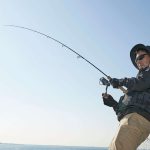Known as the fish of 10,000 casts, musky is one of the toughest fish in the world to catch. While this makes them popular among experienced anglers looking for a challenge, it also makes them a tough catch for beginners.
If you’re dreaming of catching a big, beautiful musky of your own, you need to start by learning a few essential tips. Keep reading for four that will help increase your chances of landing your first catch on your musky fishing adventure.
1. Start with the Right Equipment
Many beginners new to fishing don’t realize quite how many different options there are for equipment.
Fishing poles come in countless lengths, weights, thicknesses, materials, and more. Each is designed for a going after a specific type of fish in a specific type of water.
While you may be able to catch many different types of fish with a single pole or utilize your pole in different types of water, choosing the right equipment increases your chances of success.
When it comes to musky fishing, having the right equipment is definitely a must. Record-breaking musky have topped out at 70 pounds or more. A fishing pole designed for catching Bass or other small fish can’t handle that kind of weight.
For musky fishing, you’ll want to choose a 7-to-8-foot heavy-duty pole and at least a 20-pound line.
2. Choose Barbless Hooks
Musky are tough skinned with large mouths and very sharp teeth. Trying to extract a sharp hook that has sunk into a musky’s mouth can be tough.
That’s why its best for beginners to use barbless hooks when musky fishing.
3. Research Fishing Spots
Experienced fishermen spend hours or even days waiting for their next catch. If you’re new to the sport, or just new to fishing for musky, it’s not hard to lose interest if it takes too long to get a bite.
That’s why it’s important for beginners to research the right spot to drop their line carefully.
Musky are native only to North America. In fact, they were once found only in 8 to 10 states in the U.S. and a few provinces in Canada. But breeding programs and hatcheries have helped spread these massive fish to states across both countries.
Their size and original native habitat mean that they prefer deep, colder waters. Unlike Salmon or other migrating fish breeds, musky often stays in one area or return to the same areas season after season.
This makes it easier to find the perfect fishing spot in any area. Simply ask around at local tackle shops or do your research online to figure out where other anglers are having luck in the area.
4. Pick the Right Bait
The large size of musky requires a large bait. While there are many options out there, beginners can’t go wrong with a large spoon bait.
If you want to fish with live bait, frogs or minnows are a good choice. Musky are often the largest fish in the body of water they’re living in, which means they are used to eating other fish and large prey, rather than worms.
Musky Fishing for Beginners
If you’re new to fishing, musky can be a tough first catch to go after. Before you pack your tackle box and head to the lake, it’s a good idea to do your research so that you’re prepared.
Otherwise, you may end up spending hours on the water without getting a single bite. If you’re new to the sport and planning your first excursion, check out this article to learn a few essential tips for beginners.





